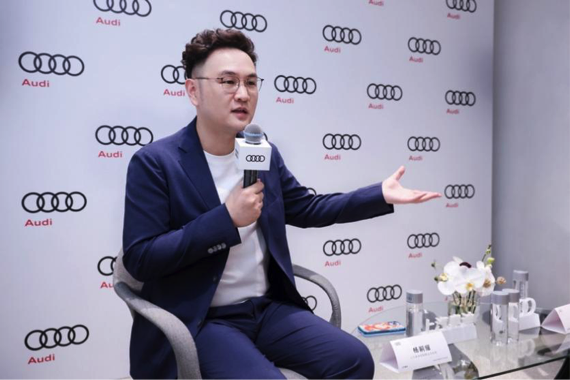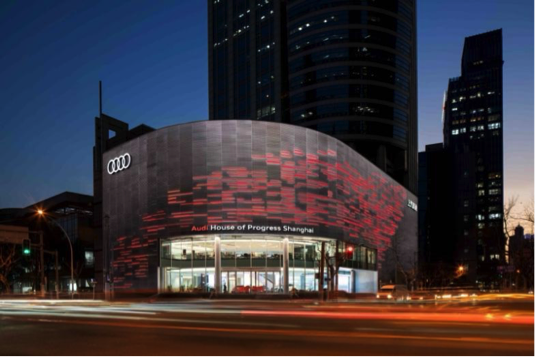Beijing Auto Show | SAIC Audi: Product development completed in China, gaining value recognition with long-termism
- 27 August, 2024
As far as I can remember, there has never been a Beijing Auto Show as lively as this year. In addition to the red-clad uncles who have been reported by the media as car models and the green-clad soldiers who have become Internet celebrities, there are also special trains of friends from Asia, Africa, and Latin America, as well as traditional giants from Europe, America, and Japan who have become humble.
However, even with a series of grand press conferences, piles of personal visits from car company bosses, and waves of overwhelming traffic, it cannot cover up the reality that the Chinese auto market is becoming increasingly difficult to survive.
When luxury is redefined, when chip computing power and interactive intelligent driving become new tricks for technology companies to invade the automotive industry, when mainstream joint venture brands are no longer mainstream, and when everyone goes from "being together" in incremental competition to "deeply apologizing" in stock competition, this market is destined to be full of confusion, involution and pain.

If we have to use a positive word to explain how to deal with the current market, it would probably be persistence - just like SAIC Audi insists on using products, services and technological innovation to drive long-termism.
At this year's Beijing Auto Show, SAIC Audi brought the Q6, A7L and Q5 e-tron. All three models were equipped with RS racing kits, which not only demonstrated its deep pursuit of brand youth and personalization, but also marked a new chapter in in-depth cooperation with Audi.
SAIC Audi was established not long ago. When it was established, the Chinese auto market had already started a new round of changes. In 2024, three years after its establishment, every brand is faced with an issue that they do not want to face but have to face - price reduction. In the view of Yang Siyao, general manager of marketing at SAIC Audi, "being cheaper than others has never been our goal." In an exclusive interview with The Paper, he said: "We are more concerned about the differences between us and our core competitors, rather than gaining everyone's recognition through price. Of course, our prices will tend to be in a reasonable range. But in the end, users need to identify with your products and your brand concept... You must adhere to long-termism."

Yang Siyao, General Manager of Marketing at SAIC Audi
Adhering to this concept, SAIC Audi has made steady progress in the past three years. By adhering to its values and making breakthroughs in technology, services and channels, it will deliver more than 30,000 vehicles in 2023. In the first quarter of 2024, its delivery volume further accelerated, exceeding 12,000 vehicles, a year-on-year increase of 430%, and its market share also increased by 416%. This not only shows the strong performance of SAIC Audi, but also reflects that its young and trendy brand image is widely recognized by consumers.
As many industry leaders have said, in the era of elimination matches with diversified consumer demands and fierce stock competition, automakers should cooperate for mutual benefit and be competitive teammates, rather than inefficiently fighting. In this regard, SAIC Audi has long realized it.
As the head of a luxury brand, Yang Siyao believes: "Luxury brands build cars for consumers who fit the brand and identify with the brand. It is important what we can bring to them." In addition to the enterprising and youthful attitude shown in its products, SAIC Audi has also been innovating in its operating model.

Audi Avant-garde
According to Yang Siyao, SAIC Audi has made many new attempts in the process of operation. For example, SAIC Audi initially deployed supermarkets, but now it adopts the model of supermarket + user center. In addition, there are Audi Cities in first-tier cities and Audi Progress Club at the Shanghai headquarters. At present, SAIC Audi has nearly 200 dealer stores covering 88 cities. "For those with good customer flow and sales performance, we will stick to the supermarket model, and at the same time vigorously promote our user center. This combination of punches is liked by our consumers, and we can get closer to them and provide them with better services." He said.
As Yang Siyao's partner, Godler, who is also the general manager of SAIC Audi's marketing business, further introduced: "Consumers can come to the store to experience our models, and (online) there is also our digital experience, including our app. These are all measures for us to get closer to customers and understand them better, especially the young customer group."

Thorsten Godulla, General Manager of Marketing at SAIC Audi
Although SAIC Audi is currently moving steadily forward, Yang Siyao has higher expectations.
From the perspective of product design and features, as well as customer portraits, SAIC Audi has become a younger Audi. Next, with the support of the two giants, SAIC and Audi, SAIC Audi hopes to further highlight its technological advantages and promote them in the market - the joint development of intelligent connected electric vehicles by SAIC and Audi is an important next step.
From exchanging market for technology to technical cooperation, SAIC Audi is leading a new era of joint ventures. In the joint development between SAIC and Audi, Audi represents a century-old luxury sports brand, and SAIC has the empowerment of China's smart manufacturing. The two technical partners can provide SAIC Audi with more technical support for development.
Specifically, China is ahead in smart connectivity and smart driving, and China has the most complete new energy industry chain layout. Even though the global technical solutions are similar, China's iteration and subsequent evolution will be faster.
Audi has long adhered to the "in China for China" strategy, which must be implemented in products and ecosystems. With German design, control, and quality, plus China's positioning of intelligent connected driving, we hope to bring some surprises to everyone. In short, "we want to put the best of China and Germany together," said Yang Siyao.

With strong resource backing and a clear direction, the outside world still has one question: when China's new forces shorten the development cycle from 7 years to 3 years, and then to 18 months, how can joint venture car companies with traditional backgrounds keep up with this speed?
Facing this question that has been asked many times, Yang Siyao gave a very sincere answer. He revealed: "SAIC Audi's product development will be completed in China, which ensures that SAIC Audi can have a competitive advantage and catch up with China's speed."
On the other hand, like most traditional car companies, SAIC Audi needs to spend about a year to verify, road test, and extreme environment test a new car after trial production to ensure that the product is foolproof. "We will never compromise on this point and cannot let consumers be testers."
Even though the market is very competitive, the pace is fast, and elimination is cruel, SAIC Audi has always maintained its strategic focus. After all, the automobile industry with a 138-year history has never been about competing for the day.










0 Comments